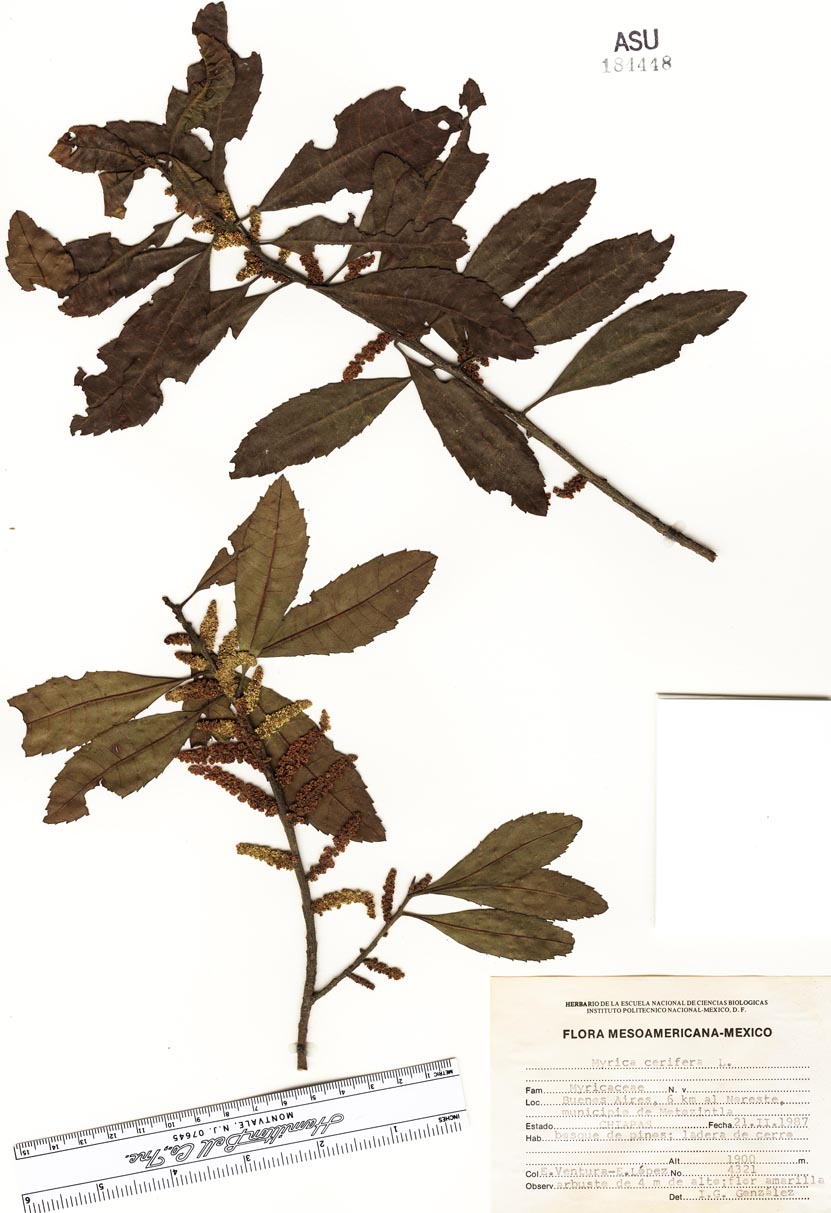Myrica
|
Family: Myricaceae |
Shrubs or small trees , often aromatic and resinous. Branches spreading, terete, glabrous or pubescent, often gland-dotted. Leaves persistent or deciduous; stipules absent. Leaf blade aromatic when crushed (except M . inodora ), oblanceolate, elliptic, obovate, or oblong-ovate, membranous or leathery, margins entire or serrate-denticulate, especially in distal 1/2, pubescent or glabrous, usually gland-dotted. Inflorescences ± erect, ellipsoid to short-cylindric or ovoid, appearing before or with leaves; bracts ovate, glabrous or variously pubescent. Flowers unisexual, rarely bisexual, staminate and pistillate flowers usually on different plants, infrequently on same plants. Staminate flowers: stamens (2-)3-12(-22), shorter or longer than subtending bract; filaments mostly distinct, often connate into branching staminal column, each branch terminated by anther; rudimentary ovary occasionally present. Pistillate flowers: ovary subtended by 2-6 broadly ovate bracteoles, these sometimes persistent and accrescent, always shorter than fruit, sometimes completely absent; styles short. Fruits globose or ovoid to lenticular, smooth or more commonly with warty protuberances, usually covered with waxy coating that dries white. x = 8. Myrica is often cultivated. Myrica species were used by various tribes of Native Americans for medicinal purposes. Leaves were used for a gynecological aid and an emetic; the bark, as a blood purifier and a kidney aid (D. E. Moerman 1986). Bayberry candles were used by early settlers, and they remain popular household items, both decorative and functional.
Pistillate fl subtended by a primary bract and 2-6 bracteoles, the latter persistent or deciduous, often resembling tiny sep, not forming a bur; ovary glabrous, or often covered with waxy papillae, sometimes also hairy, ripening into an achene or drupelet; aromatic shrubs or small trees, ours all dioecious, with entire or merely toothed, exstipulate lvs. (Cerothamnus, Gale, Morella) Spp. 2-4 are closely related and not always sharply distinct. Nearly 50, widespread Gleason, Henry A. & Cronquist, Arthur J. 1991. Manual of vascular plants of northeastern United States and adjacent Canada. lxxv + 910 pp. ©The New York Botanical Garden. All rights reserved. Used by permission. |

